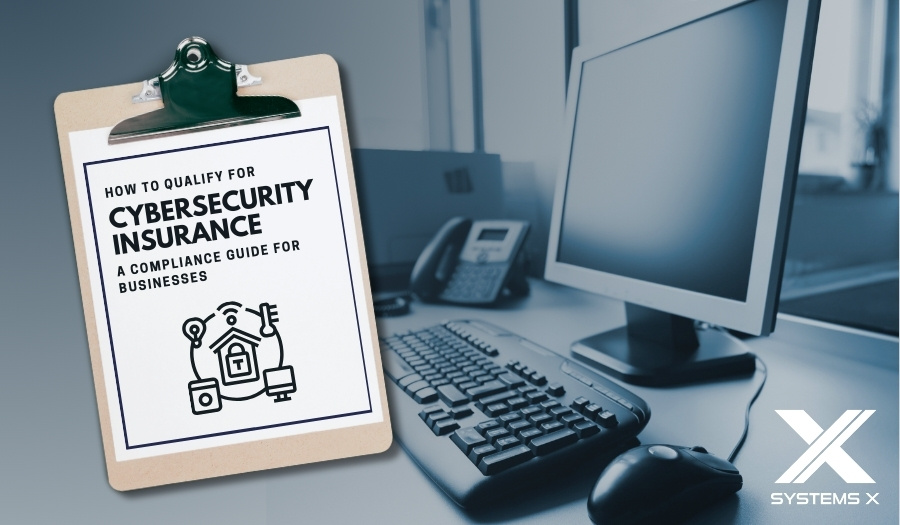4 Cybersecurity Threats (+Solutions and Tips for Every Online User)
Modern technology has introduced a number of conveniences for both individuals and businesses. However, as many of the top online breaches of recent...
4 min read
 Joseph Ugalde
:
Dec 1, 2022 8:48:00 AM
Joseph Ugalde
:
Dec 1, 2022 8:48:00 AM

A cybersecurity strategy is a plan that organizations leverage to improve security. It is a top-down approach that outlines how an organization secures data and information to combat cybercrimes. This type of strategy involves selecting and implementing best practices to secure an organization's infrastructure against internal and external threats.
Today, many businesses are vulnerable to cyber-attacks in today's digital landscape, where hackers continue to devise creative strategies to hack systems and manipulate data. Statistics show a record of 15 million data breaches in 2022. This was an increase of a whopping 167% from the previous quarter. For this reason, businesses of all sizes need to implement measures to combat cybersecurity crimes to prevent data breaches.
Organizations should focus on creating a solid cybersecurity strategy and culture, especially with today's massive shift to remote and hybrid work. This is an important consideration, no matter the size of your business. But what is cybersecurity culture, and why is it important? How do you create an effective cybersecurity strategy? Here is a comprehensive guide to a cybersecurity culture.
Cybersecurity culture in a work environment is the values, goals, culture, processes, beliefs, norms, and policies implemented within the organization. Employees are expected to adhere to the policies that protect the organization from security risks.
A cybersecurity culture is an essential component of an organization. It helps employees understand the importance of cybersecurity and why they should be part of ensuring that the organization is free from cyber threats and attacks. Employees with a cybersecurity culture mindset take measures to protect the organization from cybercrimes. They have a cyber-savvy mindset and understand how to respond to threats.
A robust cybersecurity culture protects the organization's reputation, keeping customer and proprietary information safe. This practice also saves the organization time, energy, and money. Operations continue uninterrupted without worrying about losing money to hackers. This gives everyone time to focus on the core elements of the business. Customers become more confident about your business and this builds trust.
Building a cybersecurity culture may appear simple at first, but it comes with various challenges that should be addressed to achieve an effective outcome. Here are some of the challenges that organizations face.
If you do not have a cybersecurity culture for your organization, it is important to create one to protect your business. Building the culture involves various strategies, tips, people, solutions, and skills. Here's an overview of five primary best practices to create a cybersecurity culture and boost cybersecurity for your organization.
What do you want to achieve by setting a cybersecurity culture? What practices do you intend to implement that will boost security and protect your organization from cyber-attacks? How do you plan to monitor the progress to ensure that you are working towards achieving your goals? Answering these questions can help you define your goals and objectives and identify elements that constitute the effectiveness of security adherence for your organization. When you meet the set goals, acknowledging your achievements is essential, which further establishes a solid cybersecurity culture for your organization.
A human-centric approach is about creating guidelines that integrate with employee behaviors. This begins with encouraging employees to become more security-conscious and identifying any loopholes that could lead to cyber-attacks. Effective security awareness and training are important and every employee should be part of it. Determine the changes you need to improve security and use the information to create a security culture. Additionally, ensure clear communication where employees can express their concerns and feedback on security matters.
Creating a cybersecurity culture for your organization is more than laying down procedures and processes for your employees and stakeholders. Consider investing in tools with quality features that can help you accomplish your goals. These tools empower security operations and add a layer of defense to your systems. For instance, the tools can help with network security monitoring, encryption, web vulnerability, penetration testing, antivirus software, and network intrusion detection, among other components. These tools help IT experts, employees, and other stakeholders maintain internet safety. You should also hire talented teams to avoid spending a lot of time implementing and enforcing cybersecurity policies.
For employees to adhere to your organization's cybersecurity culture, there needs to be clear communication of your policies and expectations. Employees and other stakeholders will receive the security message the same way you communicate it. Therefore, you should be clear as you convey the message. For this reason, it is important to ensure that every employee understands the policies and expectations. You can communicate via emails, company newsletters, or one-on-one talks. The most important element is to follow up closely with each individual to ensure that they apply the policies to meet the set expectations.
Employees are the backbone of your business and can either protect or expose your business to cyber threats and attacks. This is why training them on cybersecurity measures that can protect your organization is important. Cyber training and awareness should be fun and encouraging. It should be a platform where employees can ask questions and express their concerns without feeling judged. They should be allowed to try new things as they grow their skills. The training involves various elements, such as rewarding employees for taking the right steps to enhance security in the organization. Role plays, shows, and real-life examples during cyber training can stimulate employees to adhere to the culture.
Building a solid cybersecurity strategy and culture on both cognitive and behavioral levels should be an essential consideration to protect your organization from data breaches that can cause financial losses and affect your reputation. This is not a one-time project, which is why it is important to work with experienced cybersecurity experts such as Systems X to help you create a well-thought plan for improving your organization's security culture.
This helps you lower cybersecurity risks, reap organizational rewards, protect your reputation and improve overall business productivity. We have a team of security experts involved in all aspects of cybersecurity, offering a wide range of services. We focus on making the governance, management, and understanding of cybersecurity easy and more accessible for your employees. Contact us today to discuss how we can help implement a solid cybersecurity culture to improve the safety of your systems.

Modern technology has introduced a number of conveniences for both individuals and businesses. However, as many of the top online breaches of recent...

Let's face it; no company, large or small, is immune to cyber threats. With the global annual cost of cybercrime predicted to top $8 trillion in 2023...

Cybersecurity insurance has become a crucial safeguard for businesses of all sizes. However, meeting specific compliance standards is critical in...